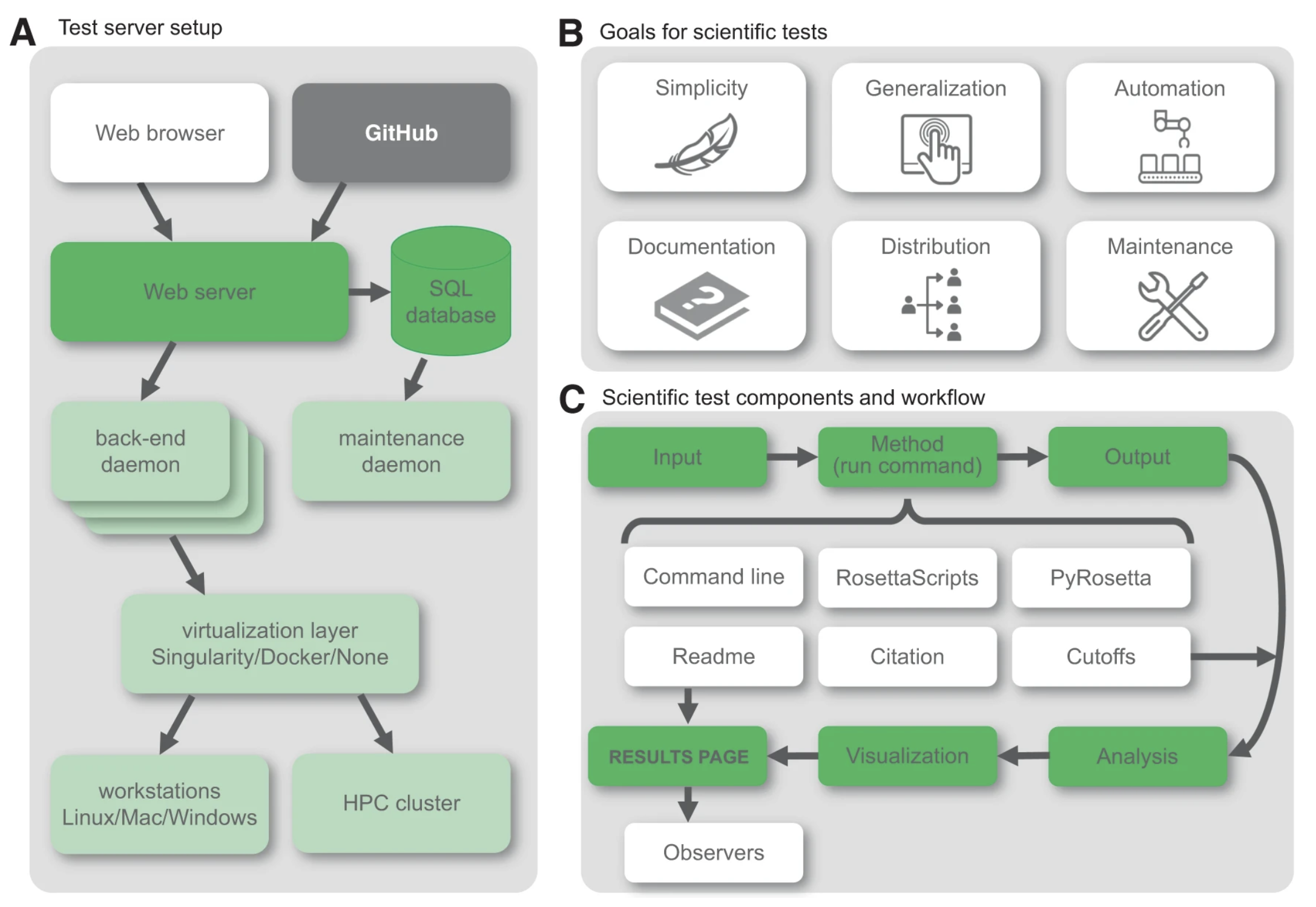Implementations
- Decide which route to go: either implementing a manual benchmark or whether to spend the effort to implement a benchmarking framework which makes implementing multiple benchmarks much easier
- Decide who is on the team
- For industry benchmarks, identify which requirements each party has
- When implementing a framework, the core team should be 2-4 people who work on the design, implementation and documentation of the benchmarking framework; these folks will drive the whole project forward
Single benchmarks
- Advantages:
- Easier and faster to set up
- Can come up with your own metrics and implementations, is less restricted by external constraints and requirements
- Disadvantages:
- Have to manually rerun them which ultimately leads to them not being run because people get busy
- Running them manually is often a burden because it’s thankless busywork that is not very satisfying
- Benchmark dataset varieties
- Metrics
- Toy examples
- Real-world examples
- Experimental measurements
- Simulated datasets
- Generalizability requirement for benchmark protocols, methods or applications:
- the more specific a method is, the less useful and useable across different modalities; in creating benchmark sets for highly specific methods you have to overcome the challenge of sparse or insufficient data
- The more general a method is, the more useful it is; benchmarking a general method requires a more diverse and larger dataset but often isn’t as limited by data availability
Implementation quality matters: The usefulness of single benchmarks is often influenced by who implements the method. A small or inexperienced team might produce a scientifically sound method that benchmarks poorly due to usability or setup issues. Conversely, a polished but scientifically weak tool might appear to perform well. When interpreting single-benchmark results, it’s important to consider both the scientific validity of the method and the quality of its implementation—especially when benchmarks are run manually and lack broader context.
Benchmarking frameworks
Advantages:
- Once the framework is set up and set up well, implementation is quick and easy
- Automated rerunning of benchmarks
- Can run many different benchmarks at once
- No confusion about metrics, setup and documentation
Disadvantages:
- Takes more upfront effort and time to set up the automated testing framework, metrics, etc.
Recommendation: Take some time to design and implement a general framework that can run scientific benchmarks automatically and continuously and covers various programming languages.
Determine goals and requirements for the benchmarks - recommendations:
- Simplicity: a simple setup facilitates broad adoption and support from the community
- Generalization: new tests should support multiple interfaces or projects and languages
- Example: command line, RosettaScripts, PyRosetta
- Automation: automatically running tests requires fewer human resources (people get busy)
- Documentation: anyone should quickly and easily add new benchmarks without having to ask someone - the quality of the documentation should be high enough to enable self-directed learning and implementation
- Distribution: the existence of the framework, the framework, and documentation should be widely distributed to limit people re-inventing the wheel; distribution beyond publication should be sought and the community should be reminded periodically
- Maintenance: test failures and maintenance should be handled by a defined procedure that also involves the broader community, not just a single person
Design framework
- Recommendation: the following framework has been shown to be useful in fulfilling the above goals and over 40 scientific benchmarks were implemented based on that (Fig 1 in REF 7)

- Implement framework
- Choose a widely used language, setup, and software in your field
- It is strongly encouraged to integrate it with automated CI testing
- Documentation:
- Documentation of the framework: should be so self-explanatory that anyone should be able to add a benchmark to the framework without much input
- Documentation of specific benchmarks: using a template of questions or headings ensures that the documentation across benchmarks is consistent. The template discourages writing short, insufficient, free-form documentation, and instead encourages the addition of important details and significantly lowers the barrier for writing extensive documentation. The questionnaire-style readme template saves time to locate necessary details to repair broken tests.
- Choose a widely used language, setup, and software in your field
- Test and optimize framework
- Add a couple of known benchmarks to framework for beta-testing of the framework
- Create templates and documentation for adding benchmarks to the framework
- Make it as easy as possible for others to add benchmarks to the framework. This includes proper code commenting, a template directory of input / run / output files, an example directory
- Documentation for the framework should exist and be self-explanatory
- Provide templates for how “users” should write documentation
- Files that need to be adjusted by the “user” or implementer of specific benchmarks should include prominently visible “EDIT HERE >>>” text
- Let others add benchmarks to the framework based on your documentation alone and no other help! - this tests the documentation of the framework!
- Iterate on the framework, documentation, and template directories and files based on the feedback provided